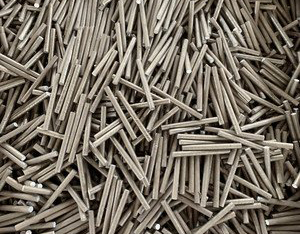Quenching Problems of No. 45 Steel and Its Solutions
May. 21, 2024
One. Introduction
As a medium-carbon structural steel, No. 45 steel is widely used in industrial production. However, in actual operation, there are often many problems regarding its quenching process. This article will analyze these problems one by one and provide feasible solutions.
Two. Problems during the quenching process of No. 45 steel
1. Quenching deformation
During the quenching process of No. 45 steel, quenching deformation is easily produced due to the stress caused by inconsistent cooling rates between the inside and outside. This causes great difficulties in subsequent processing and may even reduce the quality and service life of the product.
2. Tendency to crack
Some No. 45 steels are prone to cracking after quenching. This is mainly due to changes in the internal structure of the steel and improper heat treatment.
3. Insufficient hardness
Sometimes the hardness of No. 45 steel after quenching does not reach the expected standard. In this case, it cannot meet the needs of use, and the processing method must be adjusted in time to improve it.
Three. Methods to solve problems
1. Optimize quenching method
In order to avoid quenching deformation, graded quenching or isothermal quenching can be used. This allows the inside and outside of the steel to be cooled evenly and reduces the internal stress caused by temperature differences.
2. Strengthen pre-cooling and heat preservation measures
In order to reduce the possibility of quenching cracking, the steel can be properly pre-cooled before quenching, and then heated to a predetermined temperature and held for a period of time before quenching; in addition, attention should also be paid to controlling the temperature of the quenching medium so that it can It is beneficial to improve the toughness of steel.
3. Adjust chemical composition or change tempering conditions
For cases where the hardness is insufficient, the hardness of No. 45 steel can be increased by appropriately increasing the carbon content; in addition, you can also try to change the tempering temperature and time to better control the properties of the steel.










